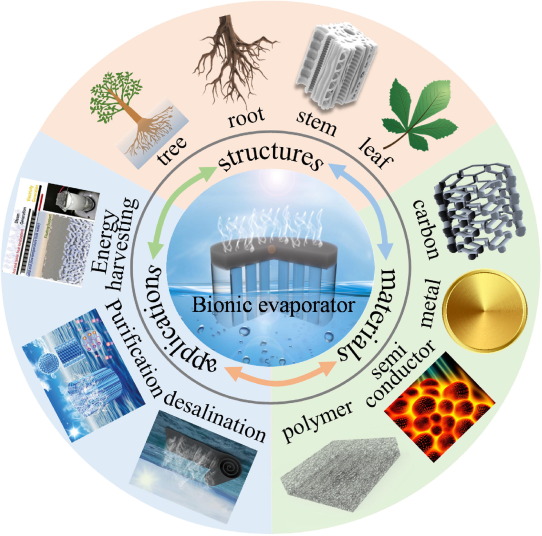
A Revolutionary Wood-Based Innovation Provides Sustainable Solutions for Global Freshwater Shortages
A pioneering new study presents an eco-friendly, cost-effective technology aimed at tackling one of the most urgent issues facing our world: the increasing shortage of clean, drinkable water. Researchers from Zhejiang A&F University in China and RMIT University in Australia have created an innovative wood-based material that passively extracts moisture from the atmosphere using solely solar energy, paving the way for safe water access in resource-constrained regions worldwide.
This extraordinary hybrid material—termed wood-based solar-powered atmospheric water harvesting material (WSAWHM)—merges biological inspiration with contemporary material science, offering an efficient and environmentally friendly response to water scarcity.
Technology Merges Natural Processes and Scientific Advancements
Revealed in the Journal of Cleaner Production on February 28, 2025, the study details the development of a porous, sponge-like structure made from delignified balsa wood treated with lithium chloride (a highly hygroscopic salt), iron oxide nanoparticles, and a carbon nanotube coating. This composite material enhances moisture capture and thermal responsiveness—producing a substance that absorbs moisture at night and releases clean water when exposed to sunlight during the daytime.
“Billions of individuals lack access to safe drinking water, resulting in millions of preventable fatalities each year,” stated Dr. Derek Hao from RMIT University and co-author of the research. “We’ve engineered a mechanism that emulates nature’s water cycle relying entirely on renewable solar energy and sustainable materials.”
Mechanism Overview: A Dual-Phase Water Collection System
The WSAWHM functions based on a straightforward but effective daily cycle:
– Nighttime: The lithium chloride-infused balsa structure captures water vapor from the air, even under relatively dry conditions.
– Daytime: When exposed to sunlight, heat-sensitive nanoparticles facilitate rapid release of water from the material as liquid, which can be collected and utilized directly or further filtered if required.
Significantly, the system operates without the need for electricity, mechanical components, or intricate infrastructure—making it perfectly suited for off-grid areas, remote communities, or emergency humanitarian situations.
Outstanding Performance Across Varied Conditions
The wood-based material showcases impressive effectiveness across a broad range of environmental conditions—humidity levels from 30% to 90%, and temperatures between 5°C and 55°C. In both laboratory and field assessments, the material exhibited steady, high-efficiency water production.
Notable performance metrics:
– At 90% humidity: 2.18 grams of water collected per gram of material in 10 hours
– At 30% humidity: Still absorbed 0.63g of water per gram
– Daily outdoor tests: Registered a daily water collection efficiency of 94%
– Freeze-resistance: Functionality preserved after 20 days at -20°C, with liquid water still obtainable
“This durability renders the material exceptionally adaptable, able to cater to requirements in a variety of geographic and climatic contexts—from deserts to mountainous regions,” remarked Dr. Junfeng Hou, the lead investigator from Zhejiang A&F University.
Machine Learning Boosts Performance Optimization
The development phase extended beyond conventional testing. The team employed sophisticated machine learning—specifically explainable AI models including random forest algorithms—to analyze and enhance the material’s performance.
By examining the interplay between humidity, temperature, salt concentration, and absorption duration, the researchers identified optimal configurations without relying entirely on trial-and-error methods. The machine learning models attained a prediction accuracy with an R² score of 0.988 when forecasting moisture absorption rates—showcasing the potential for accelerated, data-driven innovation in future versions.
From Laboratory to Field: Broadened Practical Uses
With its affordability, portability, and sustainability, this wood-based advancement stands ready for extensive implementation in numerous real-world contexts:
– Emergency relief operations
– Off-grid and isolated communities
– Agriculture in dry regions
– Refugee camps and areas affected by disasters
– Urban settings facing unreliable water infrastructure
Future initiatives aim to explore small-scale production with industrial collaborators, optimizing for round-the-clock functionality through solar energy storage systems, and incorporating low-cost sensors and IoT technologies for smart environmental surveillance and automatic water collection.
“With no need for intricate infrastructure or grid power, this represents a feasible and scalable move toward global water equity,” emphasized Dr. Hao.
Confronting the Global Water Crisis
As per the World Health Organization, over 2 billion individuals reside in nations experiencing high water stress, and nearly 80% of the global populace faces some degree of water insecurity. Innovations like WSAWHM present a hopeful pathway to close this gap and support communities that are most susceptible to climate change, infrastructural deficiencies, and resource limitations.
Key Benefits of the Wood-Based Water Harvesting Material:
– Functions effectively at humidity levels of 30–90%
– Operates within a wide temperature spectrum: 5°C–55°C
– Maintains freeze-resistance down to –20°C
– Completely reliant on solar power—no electricity required